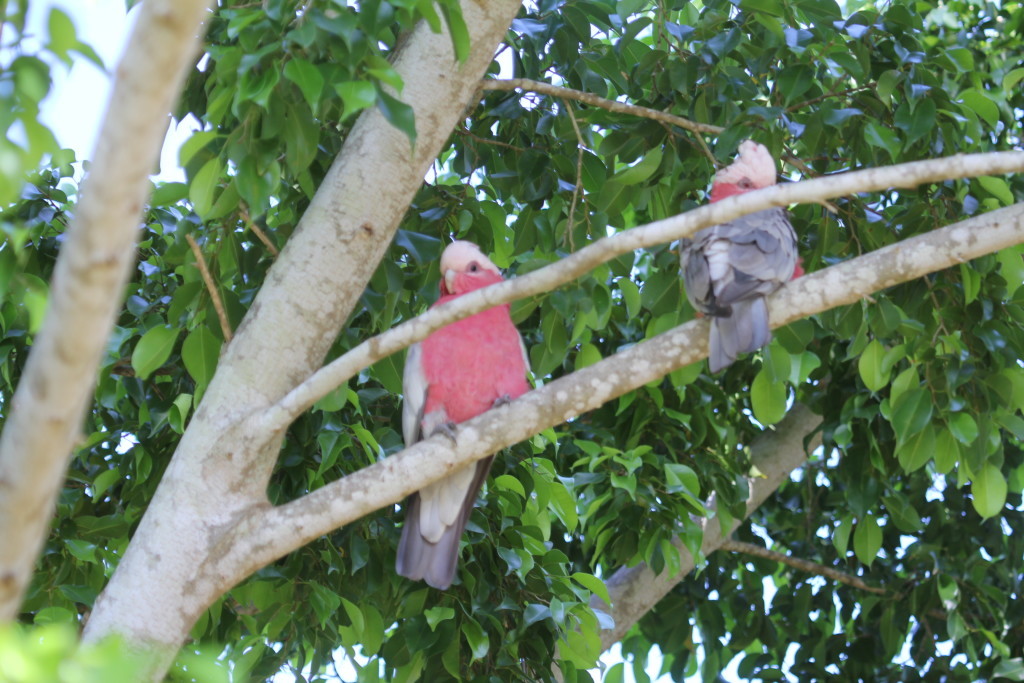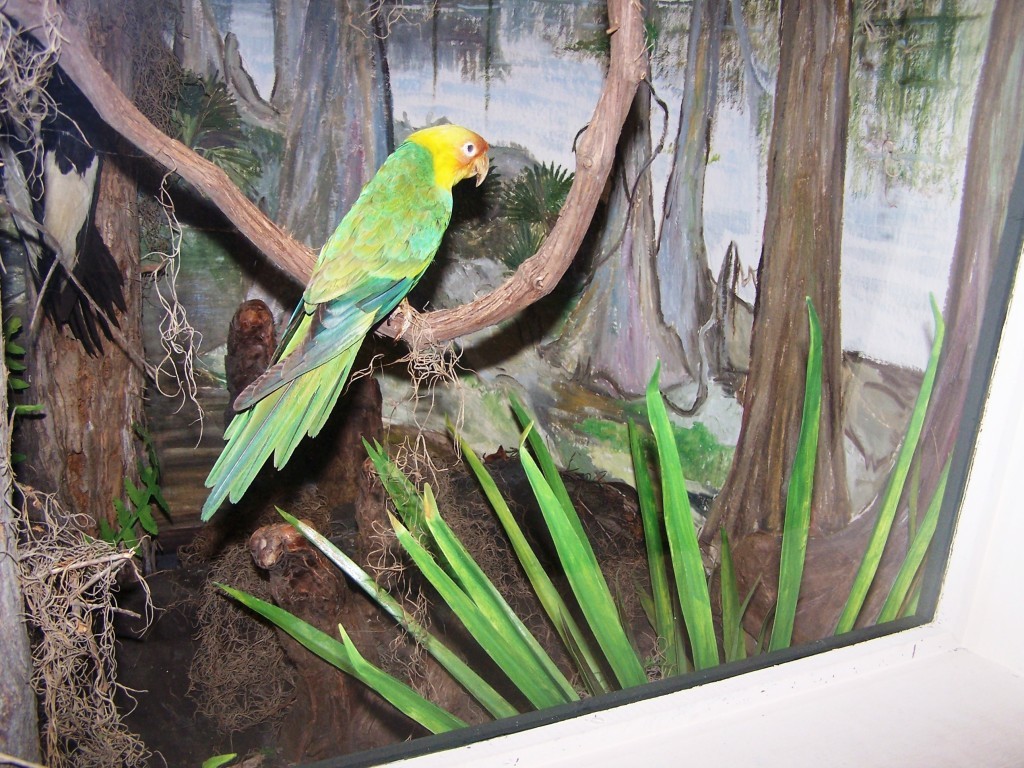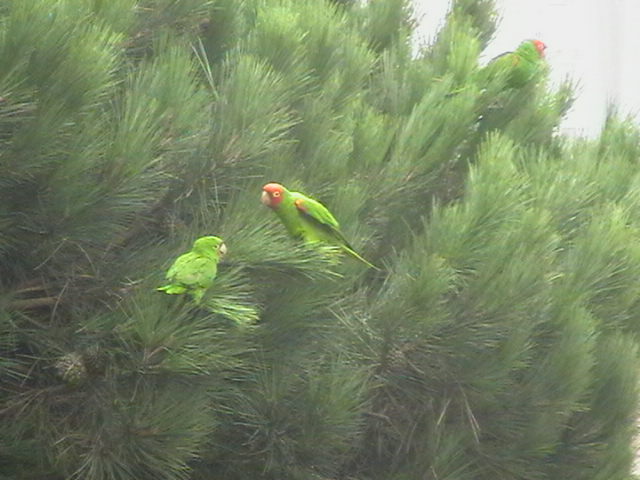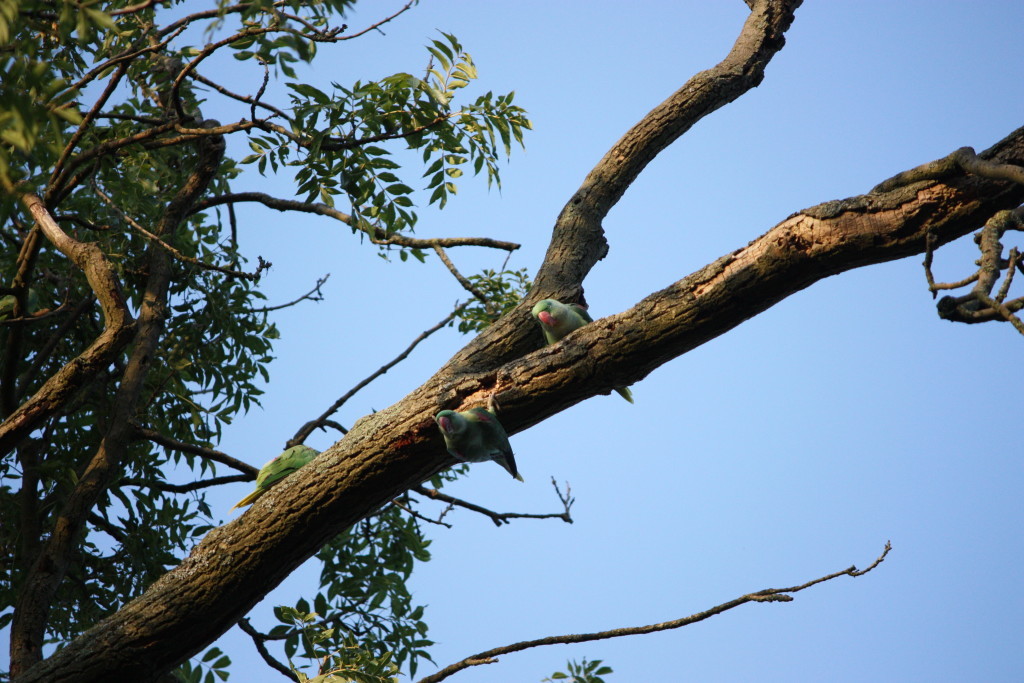What in the world are parrots doing in cities? Don’t they belong in rainforests and grasslands? Well, yes; they do…………………but their natural habitats are rapidly disappearing as humans take more and more land. Australians see wild parrots in cities and suburbs every day.

Cockatoos on telephone lines, galahs on street lamps and rainbow lorikeets in backyards are all part of the environment. Some people have bird feeders and bird baths in their backyards. Others prefer to provide trees and plants that birds can use for food like bottlebrush, grevilleas and gum trees (eucalyptus). Since humans have taken away their nesting places and vegetation used for food, the least we can do is give something back! I am one of the lucky ones who can wake to the sound of birds just outside my window and I feel truly blessed for this.

The USA had only one native parrot-the Carolina parakeet which sadly became extinct about a hundred years ago. But all is not lost! New parrot species can be found in some cities, suburbs and countryside. Quakers are rapidly spreading as they are clever and hardy birds and can withstand even a New York winter. Brooklyn College in New York has some huge quaker nests in the football field. While most people enjoy having the parrots around, utility companies don’t like them nesting in power poles. Tragically, they have killed many baby quakers by tearing down nests. There are better alternatives to keep the parrots out of the power poles. Some Brooklynites have been building nesting poles to lure the quakers away from the power pole. More details can be found on Brooklyn Parrots website.

San Francisco is home to the famous cherryhead conures made famous by Mark Bittner’s book “The Wild Parrots of Telegraph Hill”. He made friends with the birds by offering treats and they gradually came to trust Mark and visit him regularly. The flock started out small but has grown rapidly and the conures can now be seen in Ferry Park and all over the city. It is now illegal to feed the birds. More information can be found on Mark Bittner’s website.

For many years feral or escaped Ring-necked Parakeets have actually been breeding around the London and Amsterdam suburbs. They first appeared widely in the 1970s and their origin is a collection of urban myths – some say they escaped from a quarantine holding at Heathrow, some say they escaped from an exotic film set in the Shepperton Studios. Flocks are now common in areas close to south London, from Richmond Park to Lewisham. They may be some of the closest to central London perhaps? For more information, please see this website.
OK so parrots are native to Australia but NOT to the USA and UK. So what are they doing there? There are several theories as to how they got there. The most common one is that they escaped from a customs warehouse while being imported into the country or escaped from illegal importers. Other people say that they are escaped pet birds who managed to hook up and form a flock. Some American states even ban people from having pet quakers because of this theory and unfounded fears the wild parrots will destroy crops. To date, no crops have been destroyed by Quaker parrots nor have they ever interfered with native species. So please enjoy watching the parrots that live in cities and leave them alone!
For a lot more details about urban parrots, please see City Parrots.
- Originally published on Feathered and Free website which is in the process of being merged to this blog.
